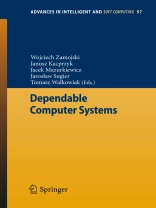Dependability analysis is the recent approach to performance evaluation of contemporary systems which tries to cope with new challenges that are brought with their unprecedented complexity, size and diversity. Especially in case of computer systems and networks such evaluation must be based on multidisciplinary approach to theory, technology, and maintenance of systems which operate in real (and very often unfriendly) environments. As opposed to “classic” reliability which focuses mainly on technical aspects of system functioning, dependability studies investigate the systems as multifaceted and sophisticated amalgamations of technical, information and also human resources.
This monograph presents selected new developments in such areas of dependability research as mathematical models, evaluation of software, probabilistic assessment, methodologies, tools, and technologies. Intelligent and soft computing methods help to resolve fundamental problems of dependability analysis which are caused by the fact that in contemporary computer systems it is often difficult to find a relation between system elements and system events (the relation between reasons and results) and it is even more difficult to define strict mathematical models with “analytical” relationships between such phenomena.
Tabella dei contenuti
From the content: Patterns improving the Common Criteria compliant IT security development process.- A comparison of dataflow and mutation testing of Java methods.- A new three levels context based approach for web search engines evaluation.- Quantitative Verification of Non-Functional Requirements with Uncertainty.- Testing Fault Susceptibility of a Satellite Power Controller.- Theoretical and Practical Aspects of Encrypted Containers Detection – Digital Forensics Approach.- Metric-Probabilistic Assessment of Multi-Version Systems: Some Models and Techniques.- Two-level software rejuvenation model with increasing failure rate degradation.- Towards a UML profile for Maintenance Process and Reliability Analysis.- Conjoining Fault Trees with Petri Nets to model repair policies.- Analysis of geometric features of handwriting to discover a forgery.












